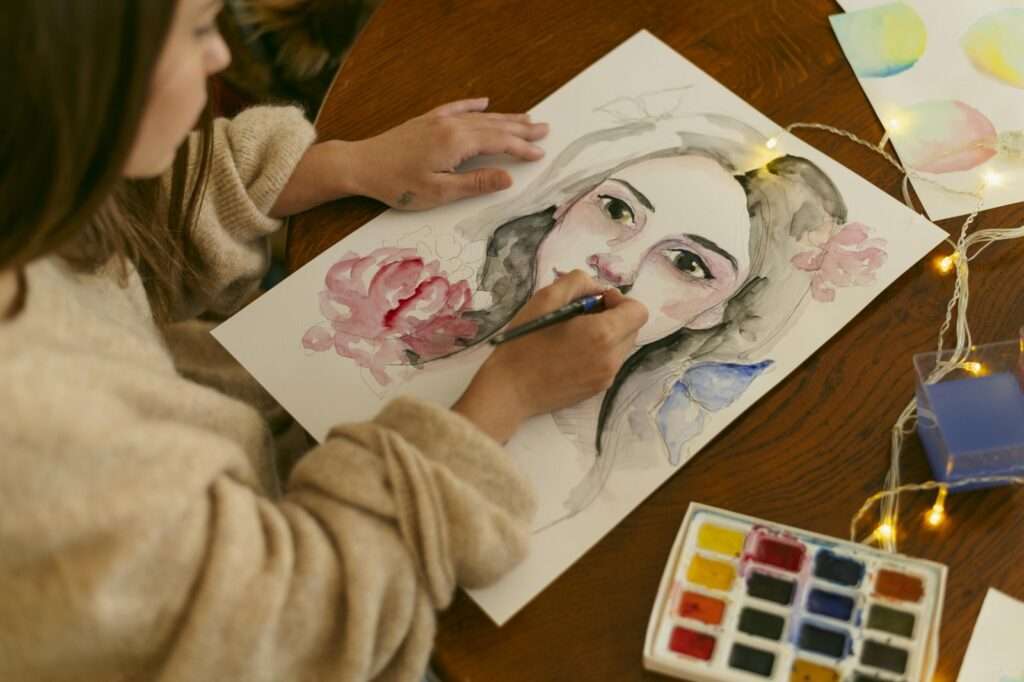Explore, Create, and Exhibit Your Art on Canvas
Canvas painting is a beautiful medium that invites artists to express emotion, explore technique, and create lasting impact. Whether you’re just starting out or want to refine your artistic journey, this guide will walk you through everything from choosing the right canvas to displaying your masterpiece — and even how to showcase it at a major art event.
What is Canvas Painting?
Canvas painting refers to the art of painting on a specially prepared fabric surface (usually cotton or linen) stretched over a wooden frame. This durable, textured surface is ideal for a wide range of painting styles and media — particularly acrylic and oil paints.
Canvas gives artists:
- A professional surface for both practice and exhibition
- The ability to apply texture, layering, and unique brush effects
- Durability — well-preserved canvas works can last a lifetime

Tools & Materials You Need
| Material | Use |
|---|---|
| Canvas | Choose from stretched canvas, canvas boards, or rolls. |
| Paints | Acrylic (quick-dry, water-based) or oils (rich, blendable). |
| Brushes | Flats, rounds, filberts; each offers unique stroke styles. |
| Gesso | A primer that preps the canvas for smooth, even painting. |
| Palette Knives | For texture and impasto techniques. |
| Easel | Keeps canvas stable and at eye-level while painting. |
Basic Techniques for Canvas Painting
- Underpainting – A light base layer that defines shapes and values.
- Blending – Smooth transitions between colors using wet-on-wet techniques.
- Impasto – Thick layers of paint applied for dramatic texture.
- Glazing – Transparent layers that add richness and depth.
- Dry Brush – Creates a scratchy, textured look using minimal paint.
- Detailing – Use fine brushes for outlines, highlights, and accents.
Tips for Beginners
- Start small — 8×10 or 12×12 inch canvases are great for practice.
- Limit your palette — Stick to 4–5 base colors and learn to mix.
- Don’t fear mistakes — You can always paint over and restart.
- Let layers dry — Especially important for acrylics and oils.
- Keep brushes clean — Especially when switching colors or techniques.
How to Finish and Display Your Canvas Art
- Let your work dry completely before varnishing or framing.
- Apply a varnish to protect from dust and UV light.
- Choose to frame your painting or leave it as a gallery wrap (painted edges).
- Hang in a well-lit but shaded area to preserve colors and texture.
Want to Exhibit Your Canvas Painting?
Here’s your chance to be part of a vibrant art community and showcase your canvas creations at one of India’s most exciting art events!
Event Details
- Event: The Haat of Art – Mumbai Edition 2025
- Dates: October 10–12, 2025 (Friday to Sunday)
- Venue: World Trade Center, Cuffe Parade, Mumbai
- Time: 11:00 AM to 8:00 PM
- Entry: Register now. Free for all visitors!
Join hundreds of artists and thousands of art lovers for 3 days of live painting, interactive exhibits, art shopping, and creative conversations. Whether you’re exhibiting or visiting, this event is a must-attend for anyone passionate about visual arts.
Final Thoughts
Canvas painting is more than a technique — it’s a dialogue between you and your creative self. As you explore, experiment, and evolve, your canvas becomes a window into your imagination. With the right tools, techniques, and a platform like The Haat of Art, your next masterpiece could inspire the world.



